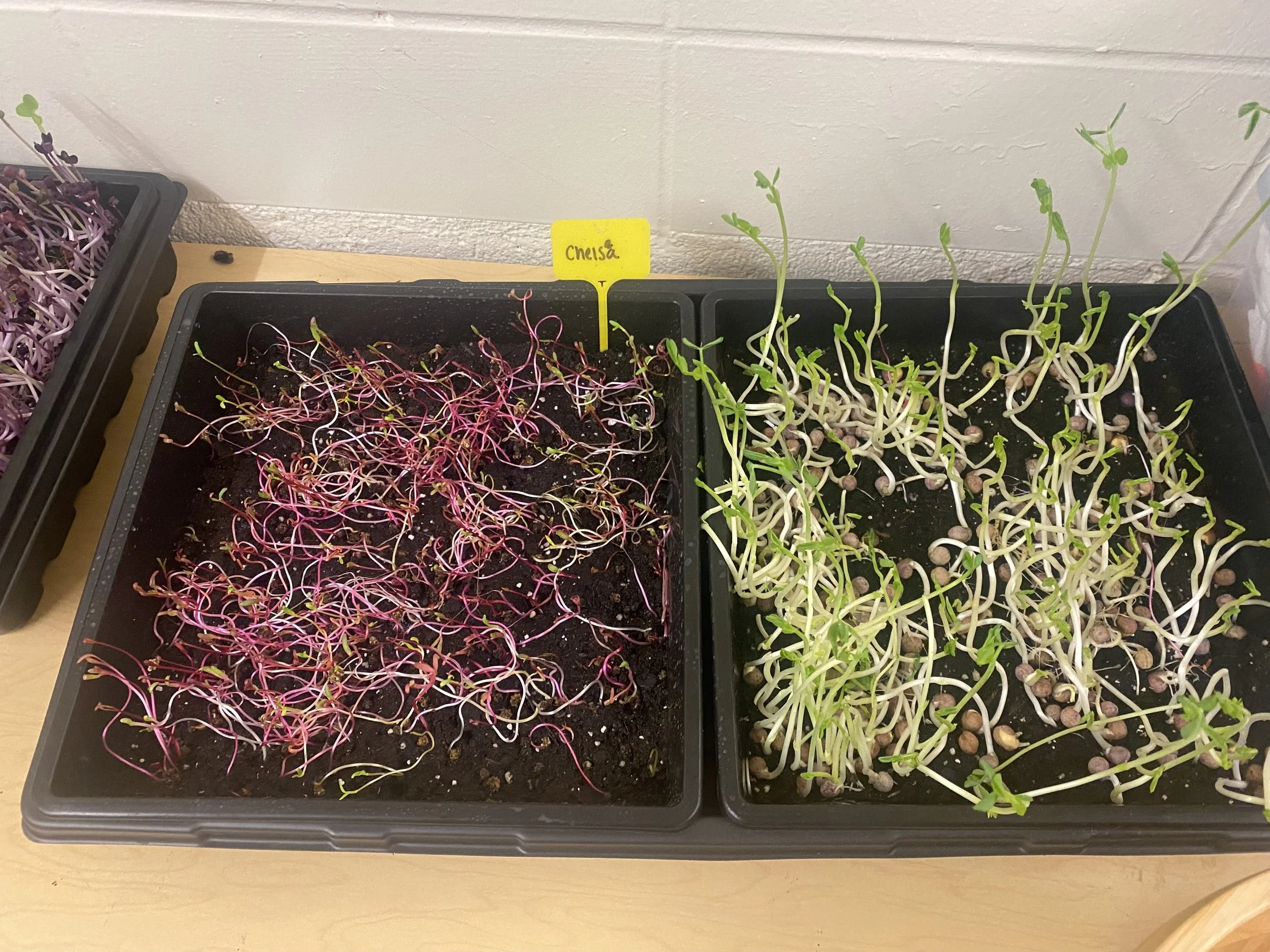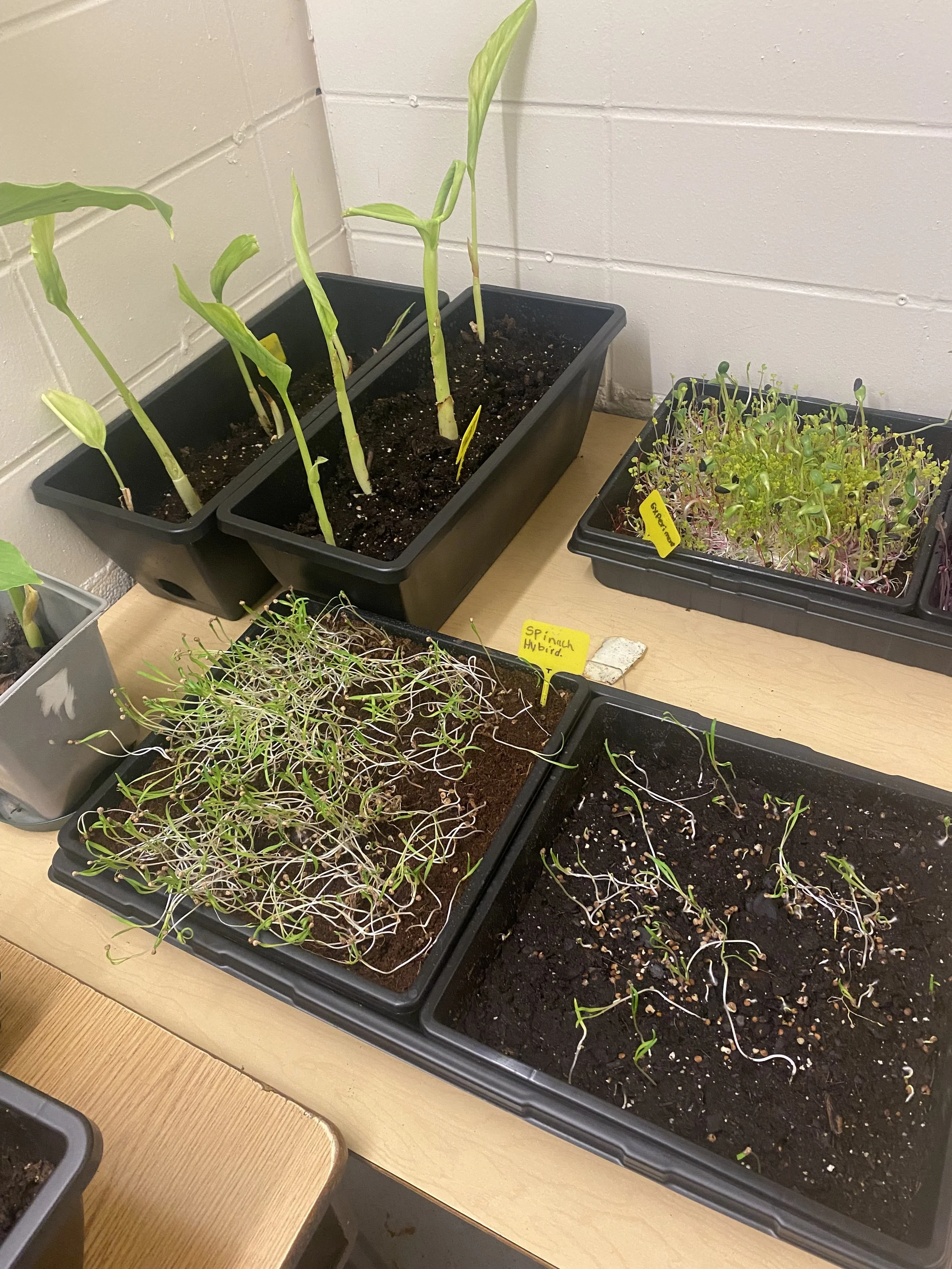September Indoors & Outdoors
Students have been back to school for a few weeks and Project Lab St. Louis is up and running, coordinating the Permaculture Project of Metropolitan St. Louis under the auspices of the Smithsonian’s National Museum of Natural History’s PolliNation initiative. We’re honored and grateful to be part of an approach to ecosystemic restoration that bridges local and national efforts.
Valaree Logan, lead gardener and school liaison for the Permaculture Project of Metropolitan St. Louis, is inspiring students in the Ferguson-Florissant School District who attend school on the Restoration & Wellness campus. Whether indoors in our designated classroom -- we thank you for the beautiful space, Mr. Melendez! -- or outdoors on the school’s spacious patio and lawn, Val is supporting students as they develop the concepts and practices of gardeners.
I'm thrilled to share that the open-source reading passages Project Lab developed back in 2019-20 are folding into Val's presentation of content-specific background knowledge. These first few weeks, students have been reading about microgreens, turmeric, black pepper, phenotype, genotype, and other topics as they come up. We continue to demonstrate that when projects are engaging, students want to understand more about what they're doing and learning. Readers become better readers by reading. That's all from me for now! – Inda
Beginnings
Valaree Logan
On September 20, the sophomores planted tumeric!! We talked about the benefits and different uses of this plant. Also, the middle schoolers started their microgreens. First we sat outside and talked and read about microgreens. Then each student got to plant their own seeds. Everyone chose under what circumstances they wanted to grow their microgreens. Some students used potting mix to plant their seeds in, some used Coco Coir. Some used just water to grow theirs and some students chose to use nutrient-enhanced water.
Mr. M. [one of the middle school teachers] was out there with us and we were able to make connections to some of their social studies lessons. For example, as a group we were discussing Coco Coir and why people prefer it because it holds ten times its weight in water. Students made the connection between earlier civilizations and today: all through human history, people have experienced droughts, times when their land and food suffered. Over time, people have learned and experimented to know that today, faced with similar challenges to our water supply, we have many soil mediums available to us.
Two days later, some of the microgreens had germinated! We use a journal to write our weekly or daily observations. Students asked and answered questions such as, What do we wonder about Microgreens? What do we think will happen during our next observation day? What did you do? What do you see? and What did you learn? These were great conversation questions and students seemed genuinely interested. A few students' trays had started growing so we touched, smelled, and looked to see how the plants had changed and recorded those observations too. Once we finished our questions, they watered and covered their own plants up and put them back.
Two 6th graders are especially interested in gardening, specifically flowers. As part of their individual Passion Project, which everyone at Restoration is engaged in, we researched what pollinators are, what the phrase “native pollinators” refers to, what insects, birds, and animals are pollinators, and what effect they have on us. The students learned what would happen to our food supply without pollinators and they’re eager to bring more bumblebees and butterflies to our garden. Eventually, their project question became, What native flowers will bring native bumblebees and butterflies to the garden? I've asked them to identify five flowers they're interested in growing -- at least three have to be native to Missouri!
A week after planting, the microgreens were looking great! Many students were impressed by the amount of growth, and wondered why some of the plants were yellow. We talked about what happens when something that needs light to grow doesn't get light and what a nutrient deficiency looks like (Vitamin D, in this case).
Photo by Inda Schaenen
September 29 was HARVEST DAY! I figured the microgreens would be close, if not ready, for students to harvest. I brought in lettuce, tomatoes, and onions from my garden for them to try with their microgreens. Intentionally, I did not wash them so that students could see what fresh produce looks like, including the bugs. Our plan was to make salads! The students were very engaged. It was a great learning opportunity for us to talk about different insects we find in the garden and how these insects aren't interested in bothering or scaring us – they just want to eat our healthy and nutritious foods. However, I also explained that not all bugs are wanted in garden spaces because they are harmful to our harvest.
Students washed the lettuce before cutting it. As they were cutting, they found the bugs and realized that they needed to do a deeper cleanse of their lettuce. This got us talking about the difference between what we find in grocery store produce (and the chemicals they use on produce to keep bugs away) and what food with no chemicals looks and tastes like. Some students who claimed to not like salad (but were willing to try ours) recorded their initial reactions to trying their microgreen-garnished salads. They loved it, ate every bite. Students were confidently speaking about how they’d nurtured and grown these plants, this food they were now eating and loving. One student made her mom a to-go salad with microgreens on top because she knew it was something her mom would love.
Photo by Valaree Logan
Photo by Valaree Logan



